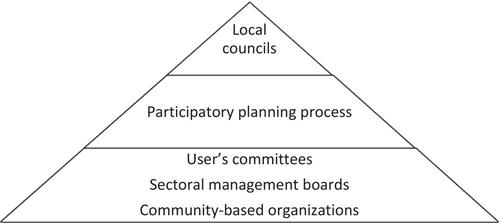Participatory local governance in rural Nepal: The primacy of informality
Abstract
Motivation
Nepal adopted a federal constitution in 2015 that created autonomous local governments across the country. A prime aim was to encourage ordinary people's participation in local decision-making processes.
Purpose
To what extent do local governments in rural Nepal adopt informal approaches—approaches that reflect local social needs and desires—to participation in decision-making?
Methods and approach
As part of interpretive case studies, the author gathered qualitative evidence as a participant observer of local government in five rural municipalities in Rasuwa District, a remote area on the northern border.
A framework was created to capture the concepts of participatory governance and sociology to guide data collection and analysis.
Findings
In the five municipalities studied, decisions were successively made in forums at village, ward and municipal levels. In the village, participation was considerable: all persons, all voices could be heard. But as proposals were aggregated upwards to ward and municipal levels, citizens participated less, being replaced by elected representatives and civil servants.
Nepal has showcased successful participatory processes by incorporating diverse local groups in a range of policy areas such as community forests, or in the operation of public services such as water or schools. The present research acknowledges their success in widening and deepening citizen participation; it also brings new knowledge to bear on deeply rooted culturally accepted informal participatory methods in rural local governments.
Policy implications
Because each local government has its own circumstances in which to operationalize participatory governance, reforms should recognize the prevalence of informalities in rural municipalities and the dominance of formalities in urban municipalities.


 求助内容:
求助内容: 应助结果提醒方式:
应助结果提醒方式:


